- Programming using
TCP
will always use the
client/server paradigm:
- The server will
start first:
- The server will
wait for
requests from
some client
- When a request is received, the server will send back a reply
- The server will
wait for
requests from
some client
- The client will
start later:
- The client sends
a request to
the server
- Then the client waits for a reply
- The client sends
a request to
the server
- The server will
start first:
- Steps in
writing a client/server
network program using
TCP:
-
The
server program
first creates
a TCP socket and
binds it to
a fixed TCP port#:
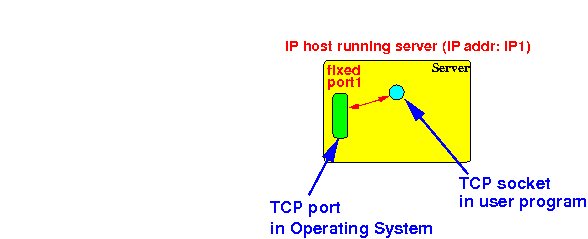
(We have learned this step before in UDP programming)
-
Then the server program
change
the socket to
listen socket
that is used to receive
connection requests:
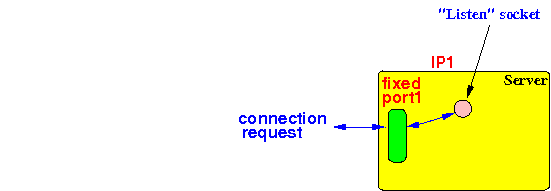
The listen socket is a special type of socekt that execute the "3-way handshake" algorithm to establish a reliable connection
- The server will
now
wait for
"client connection requests"
(This is done using the accept( ... ) system call - discussed later)
- The server will
now
wait for
"client connection requests"
- A
client program
first
create a
TCP socket:
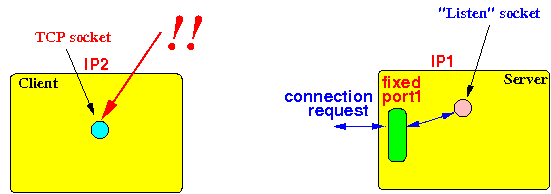
Bind the socket to an arbitrary TCP port # and use the socket to make a connection request to the server program (at the listen socket):
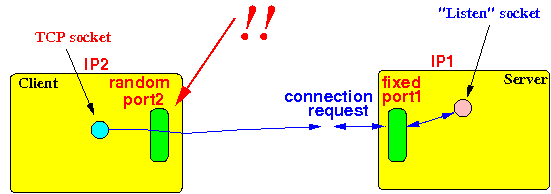
The client program use the connect( ) system call to do this
(The TCP connection process will establish a pair of send/ACK sequence numbers for the sliding window algorithm)
- When the processing of
the connection request
is complete,
the TCP module at the
server program will
create a
new TCP socket
for the
TCP connection:
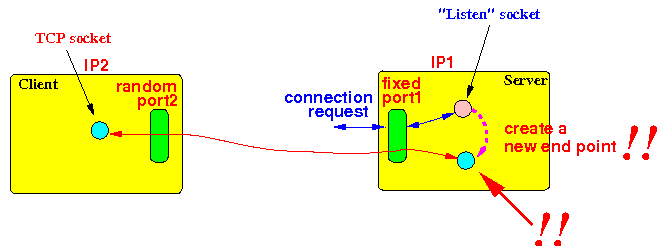
- Result:
- The client program and the
server program can
communicate with each other
through the
TCP connection
(IP1, port1, IP2, port2):
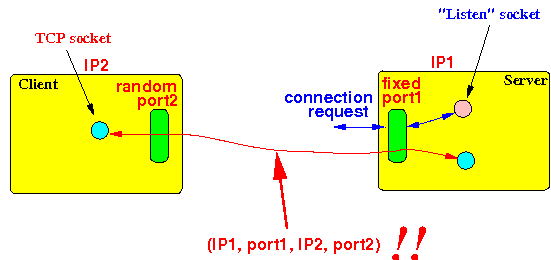
- And, the server can
still accept
other connection requests
using the
listen TCP socket:
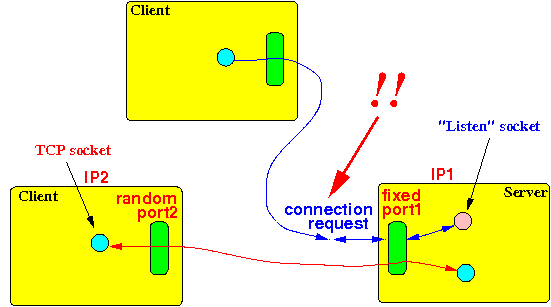
The listen socket remains free to receive new connection requests from other clients !!!
- This is how a web server or SSH server, and so on... operates
- The client program and the
server program can
communicate with each other
through the
TCP connection
(IP1, port1, IP2, port2):
-
The
server program
first creates
a TCP socket and
binds it to
a fixed TCP port#: